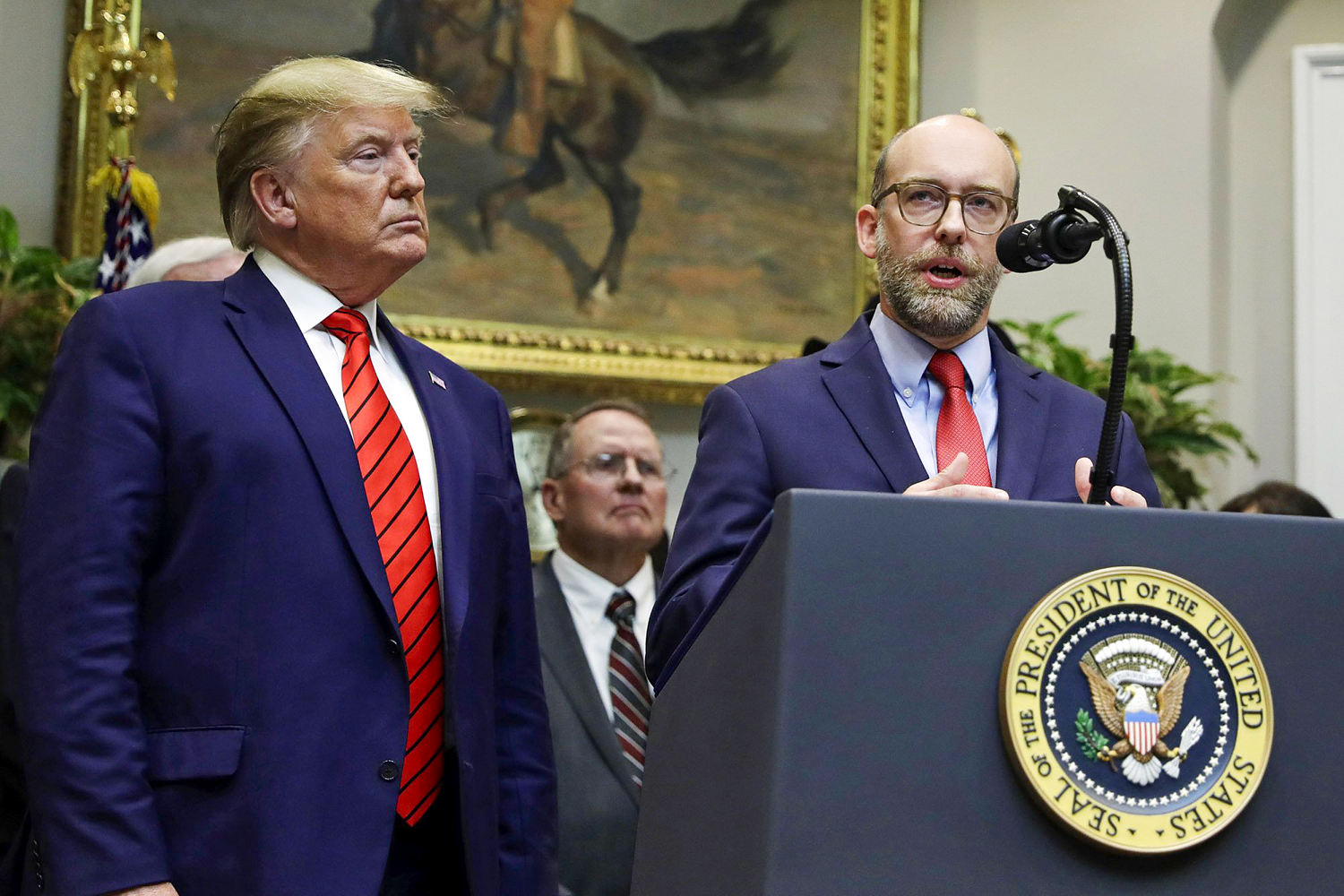
The Abrupt Start to Reductions in Force (Image Credits: Media-cldnry.s-nbcnews.com)
The tension in the capital feels thicker than ever, with the weight of uncertainty hanging over countless desks left empty in sprawling government buildings.
The Abrupt Start to Reductions in Force
Imagine waking up to news that your steady job is suddenly on the line. That’s the reality for many federal employees right now. The Trump administration announced on Friday that it has kicked off a wave of layoffs, known as reductions in force or RIFs, right in the middle of the government shutdown.
Office of Management and Budget Director Russell Vought confirmed the moves via a social media post, signaling that these aren’t just threats anymore. Unions are already gearing up for legal fights, calling the timing ruthless. Workers across agencies from health to defense could feel the pinch soon.
Why Now? The Shutdown’s Role in the Cuts
This isn’t happening in a vacuum. The shutdown, now in its 10th day, stems from stalled funding talks in Congress. President Trump has long pushed for a leaner federal government, and this impasse gives the administration leverage to trim the workforce without immediate backlash.
Earlier threats from the White House hinted at using the shutdown to push through permanent job losses. It’s part of a broader plan to reshape agencies, echoing goals from initiatives like Project 2025. Still, critics argue this exploits a crisis to sidestep normal procedures.
Who Gets Hit First: Affected Agencies and Numbers
Details are still emerging, but the Department of Health and Human Services is already confirming additional layoffs. CNN reports tracking over 128,000 workers targeted or let go since earlier this year, with more expected now.
The Partnership for Public Service estimates nearly 200,000 federal workers have left their posts recently. Here’s a quick breakdown of the scale based on recent reports:
- Confirmed cuts so far: More than 58,500
- Employee buyouts: Over 76,000
- Planned reductions: Around 149,000
- Total civilian federal workforce impact: About 12% of 2.4 million
These numbers paint a picture of systematic downsizing, hitting essential services hard.
The Human Cost: Stories from the Front Lines
Federal workers aren’t just numbers on a spreadsheet; they’re parents, veterans, and experts keeping the country running. One union rep described the mood as “devastating,” with families scrambling for stability amid unpaid bills.
Many are furloughed without pay, and now face outright job loss. The Washington Post notes that this echoes past shutdowns but feels more permanent. Employees in non-essential roles are bracing for notices, wondering if their careers end here.
Legal Pushback and Political Fallout
Lawsuits are flying fast. The Center on Budget and Policy Priorities calls these mass layoffs illegal, arguing they gut congressionally mandated programs. Unions like the American Federation of Government Employees vow to challenge every step.
On the political side, Democrats decry it as retribution, while supporters see it as necessary reform. The New York Times highlights how this could degrade agency functions, from health inspections to national security. Expect court battles to drag on for months.
Looking Ahead: What Happens Post-Shutdown?
If Congress doesn’t act soon, more agencies might follow suit. The administration’s goal seems clear: a slimmer bureaucracy by year’s end. Wikipedia tracks this as part of 300,000 total layoffs announced, mostly tied to efficiency drives.
Yet recovery won’t be quick. Rehiring takes time, and morale is at rock bottom. Experts warn of long-term damage to public services, urging bipartisan talks to end the stalemate.
Key Takeaways
- Layoffs are underway, affecting thousands amid the shutdown.
- Unions and watchdogs are fighting back legally.
- This fits a pattern of workforce reductions started earlier in 2025.
In the end, this shutdown-layoff combo underscores a divided government’s high stakes. It forces us to question how far efficiency should go before it harms the services we all rely on. What do you think about these moves? Share in the comments below.






